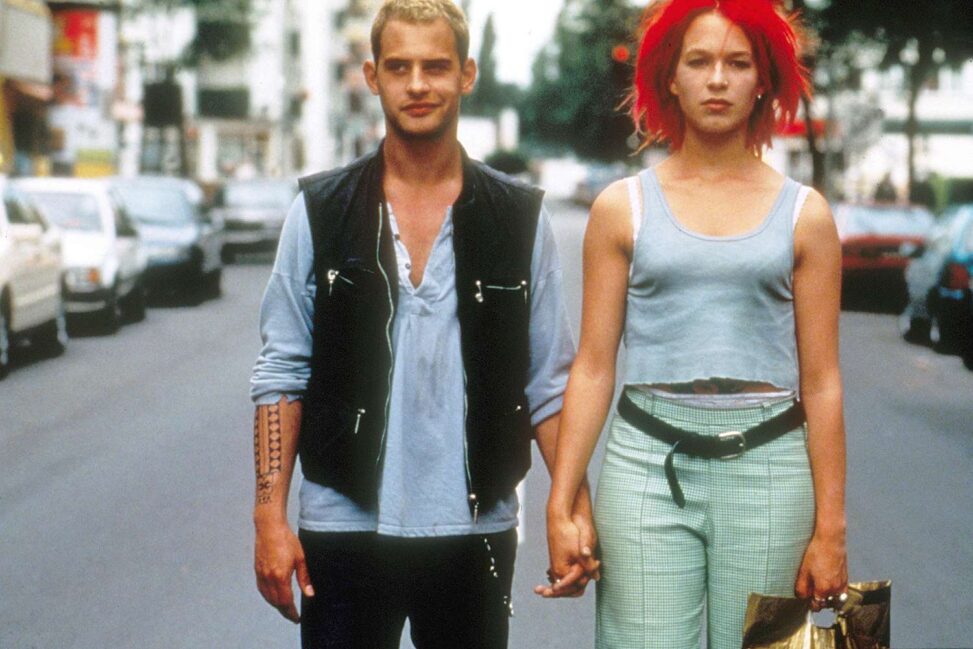Lola’s First Run – The Fatal Ending
What changes: The film begins with Lola receiving a frantic call from her boyfriend, Manni, who has lost 100,000 marks that belong to a gangster. She races to help him before he robs a supermarket. Still, her attempt fails when she is shot dead by the police Effect: This sequence establishes the stakes, but the abrupt ending serves as a early shock, which ultimately reveals that death ins’t the end to the storty. The film “resets,” showing time as malleable.
Breadcrumbs: Subtle hints appear throughout, such as the recurring clock imagery and Lola’s intense willpower that foreshadow her ability to “restart” events with her determination.
Second Run – The Reversal of Fate
What changes: After the reset, Lola makes slightly different choices as she bumps into different people, arrives at different times, and eventually ends up robbing her father’s bank at gunpoint. This time, Lola survives, but Manni is killed after being struck by a car.
Effect: The film subverts expectations by reversing the death from Lola to Manni. It demonstrates the butterfly effect and shows that small variations lead to major consequences.
Breadcrumbs: The animation sequence that bridges runs, showing Lola “deciding” to try again, clues viewers in that the film is operating within a flexible timeline. The split-second encounters with pedestrians, which later trigger flash-photographs of their altered futures, also serve as visual breadcrumbs that emphasize how every action ripples outward. As well Lola and Manni’s conversations between timelines hint at their future.
Third Run – The “Perfect” Outcome
What changes: In the final run, Lola narrowly avoids previous mistakes. She wins a fortune at a casino through sheer will or luck, while Manni successfully retrieves the lost money from the homeless man who took it.
Effect: Both characters emerge alive and victorious, symbolizing the triumph of choice over destiny. The looping ends with a sense of completion and it seems Lola and Manni’s futures now open and unbound.
Breadcrumbs: Earlier sequences establish recurring symbols (the spiral, the red phone, the ticking clock) that suggest time’s cyclical nature. The casino scene also pays off the recurring theme of Lola’s scream as a supernatural or emotional force that alters outcomes.
Chekhov’s Guns in the Film
The Red Phone: The first object to set the story in motion which in essence is Lola’s lifeline to Manni and reappears in every timeline, symbolizing Lola’s connection and urgency.
The Clock and the Spiral Motif: These appear repeatedly, foreshadowing the looping narrative and the idea that time can be rewritten.
Lola’s Scream: Introduced early as an emotional release, it later becomes almost magical, breaking glass and symbolically shattering fate.
Secondary Characters: Brief encounters (the woman with the baby carriage, the cyclist, the bank guard) each become “Chekhov’s guns” as their seemingly minor roles explode into significance through the photographic flash-forwards showing how their lives diverge after each run.

Provide Feedback